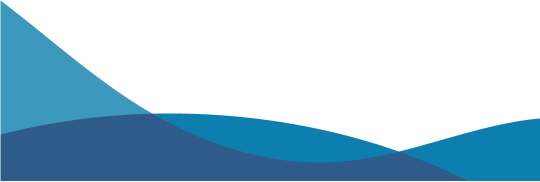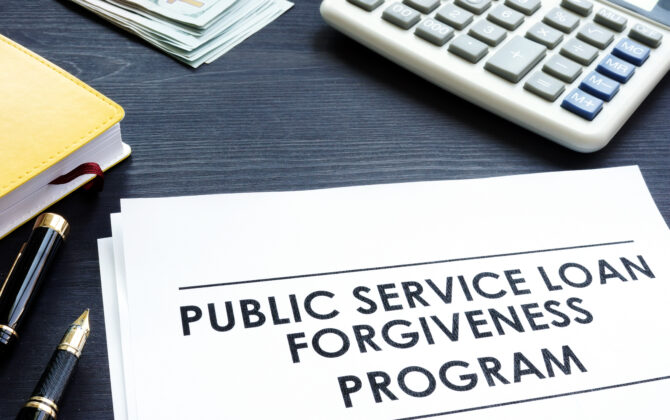The story of student debt forgiveness continues to evolve, with 42.8 million borrowers in the US and a combined student debt total of $1.753 trillion. 2023 saw the first-ever reduction of student loan debt in the US, while, in the same year, the Supreme Court struck down the Biden administration’s student loan relief program.
Though Public Service Loan Forgiveness (PSLF) – one of the most well-known programs – offers loan assistance to qualifying borrowers, it can be challenging to navigate and still has a low acceptance rate. For this reason, it’s important to understand the requirements for student loan forgiveness fully. Here, we’ll explore six key programs and who qualifies.
Public Service Loan Forgiveness (PSLF)
The Public Service Loan Forgiveness (PSLF) program offers student debt relief to borrowers with Federal Direct Loans who are working full-time for the government or a qualifying nonprofit.
PSLF enables borrowers enrolled in a qualifying repayment program – usually an Income-Driven Repayment (IDR) program – to receive loan forgiveness after 120 (10 years) of qualifying payments.
 Who qualifies
Who qualifies
Borrowers who qualify for PSLF must:
- Work full-time for a government organization at any level (federal, state, local, or tribal) or a nonprofit organization that’s tax-exempt under Section 501(c)(3) of the Internal Revenue Code
- Have Federal Direct Loans or consolidate other federal student loans into a Direct Loan
- Make 120 qualifying payments
Borrowers generally need to be enrolled in a qualifying repayment plan, such as an IDR plan.
Income-Driven Repayment (IDR)
The federal Income-Driven Repayment (IDR) program allows student loan borrowers to set up a repayment structure based on income and family size. With an IDR plan, payments are typically lower than they would be under a 10-year Standard Repayment Plan.
IDR provides a path to forgiveness after a set number of years of repayment, depending on the plan you’re enrolled in.
 Who qualifies
Who qualifies
To qualify for an IDR plan, you must:
- Have federal student loans
- Provide annual documentation and recertification of your income and family size (Note: This may become automated under the SAVE plan in the future.)
IDR Comparison Chart
|
Applications for SAVE, other IDR plans, and loan consolidation are available on http://studentaid.gov. You can also submit a PDF application to your loan servicer by uploading it to your servicer’s website, or mailing it to them. Expect a delay in processing times. The Education Department recommends checking its website for updates – there is no processing time estimate available. |
|
Plan |
Monthly Payments |
Repayment Period |
Status |
|
SAVE (formerly REPAYE) |
- 5% of discretionary income for Undergraduate Loans
- 10% of discretionary income for Graduate Loans
- Weighted average for borrowers who have both
|
- 10 years for low-balance borrowers (less than $12,000)
- 20 years for only undergraduate loans
- 25 years for any Graduate Loans
|
Replaced REPAYE |
|
Income-Based Repayment (IBR) |
- 10-15% of your discretionary income (and your spouse’s if filing jointly)
- Never more than federal 10-year Standard Repayment Plan amount
|
20-25 years, depending on when you become a new borrower |
Remains available but borrowers cannot select plan after 60 payments on REPAYE that occur on/after July 1, 2024 |
|
Income-Contingent Repayment (ICR) |
The lesser of the following: - 20% of your discretionary income or
- What you would pay on a repayment plan with a fixed payment over the course of 12 years, adjusted according to your income
|
25 years |
Not accepting enrollments for current students; only available to future borrowers with consolidated Parent PLUS loans |
|
Pay as You Earn (PAYE) |
- 10% of your discretionary income (and your spouse’s if filing jointly)
- Never more than federal 10-year Standard Repayment Plan amount
|
20 years |
Not accepting new enrollments |
National Health Service Corps (NHSC) Loan Repayment Program
The NHSC Loan Repayment Program offers student loan forgiveness for doctors and mental health practitioners by providing up to $50,000 in loan repayment assistance for full-time work or up to $25,000 for part-time work.
This program is available to physicians, dentists, and mental health clinicians who commit to at least two years working in a Health Professional Shortage Area (HPSA), with the potential for additional loan forgiveness through a contract extension.
Who qualifies
To qualify for the NHSC Loan Repayment Program, you must:
- Be a US citizen or national
- Have a qualifying loan
- Be licensed to practice in an NHSC-eligible primary care medical, dental, or mental/behavioral health discipline
- Work at an NHSC-approved site in a Health Professional Shortage Area (HPSA)
Perkins Loan Cancellation and Discharge
If you have Federal Perkins Loans, you may be eligible for cancellation of up to 100% of the loan after five years of service if you work or volunteer in a public service position. This program cancels Perkins Loans in increments—borrowers are eligible for 15% forgiveness for the first two years, 20% for the third and fourth year, and 30% for the fifth year. Qualifying fields include teaching, nursing, firefighting, law enforcement, and the military.
Who qualifies
For Perkins Loan Cancellation and Discharge, you must:
- Have Federal Perkins Loans
- Work or volunteer in a qualifying public service position
Teacher Loan Forgiveness
This program offers student loan debt relief to teachers working in low-income schools and other underserved areas. Teachers who work full-time in educational service agencies and meet other requirements may be eligible for up to $17,500 in forgiveness of certain student loan types.
Who qualifies
To qualify, you must:
- Teach full-time for five consecutive academic years in a low-income school or education service agency
- Fit the definition of highly qualified teacher: have at least a bachelor’s degree, receive full state certification as a teacher, and have not had your certification or licensure requirements waived on an emergency, temporary, or provisional basis
- Be employed full-time as a highly qualified teacher for five complete, consecutive academic years, with at least one of those years occurring after the 1997–1998 academic year
- Seek forgiveness for loans taken out before the end of the five academic years of qualifying teaching
Nurse Corps Loan Repayment Program
The Nurse Corps Loan Repayment Program provides loan repayment assistance to registered nurses (RNs) and advanced practice registered nurses (APRNs) working in critical shortage facilities or eligible nursing schools as faculty. Nurses can have up to 85% of their unpaid nursing education debt repaid after three years of service—60% after two years and 25% after a third year.
Who qualifies
To qualify for this program, you must:
- Be a US citizen, national, or lawful permanent resident
- Be licensed as an RN or APRN
- Have received a degree from an accredited school of nursing
- Work full-time in a critical shortage facility or as faculty at an eligible school of nursing
Getting help on student loans
Navigating the intricacies of student loan forgiveness around availability, eligibility, and application procedures can be challenging. Fortunately, there may be several paths to forgiveness depending on your loan type and employment. A Laurel Road student loan expert can help you explore options and develop a personalized plan. Knowing you’re not alone in this journey can be the first step toward peace of mind and financial independence.
Forgiveness terms to know
PSLF
Public Service Loan Forgiveness, a 10-year federal student loan repayment program available to government and qualifying nonprofit employees.
IDR
Refers to the federal Income-Driven Repayment Program, comprised of multiple plans.
NHSC Loan Repayment Program
The National Health Service Corps (NHSC) Loan Repayment Program is available to physicians, dentists, and mental health clinicians who commit to at least two years working in a Health Professional Shortage Area (HPSA).
Perkins Loan Cancellation
For Perkins Loan holders, provides partial or full cancellation of Perkins Loans for certain kinds of public service and volunteer work.
Teacher Loan Forgiveness
A program for teachers offering forgiveness of Direct Loans or FFEL Program loans.
Nurse Corps Loan Repayment Program
Pays up to 85% of student loan debt for qualified nurses who work for a minimum of two years in either in a CSF or NF.




